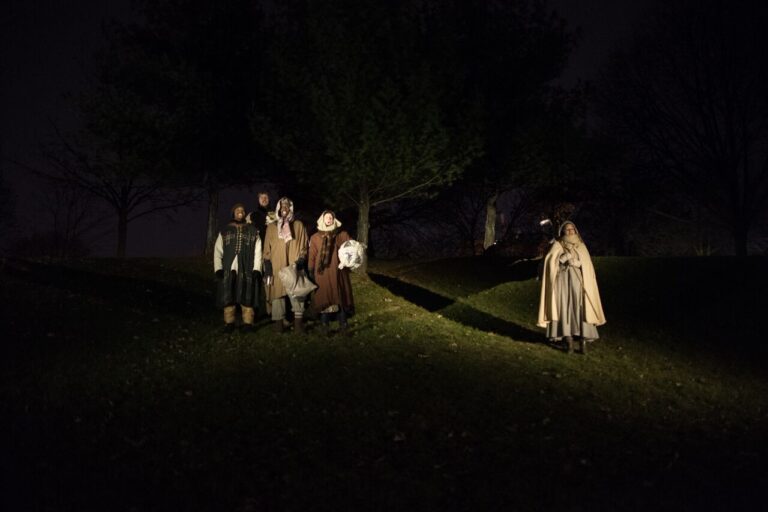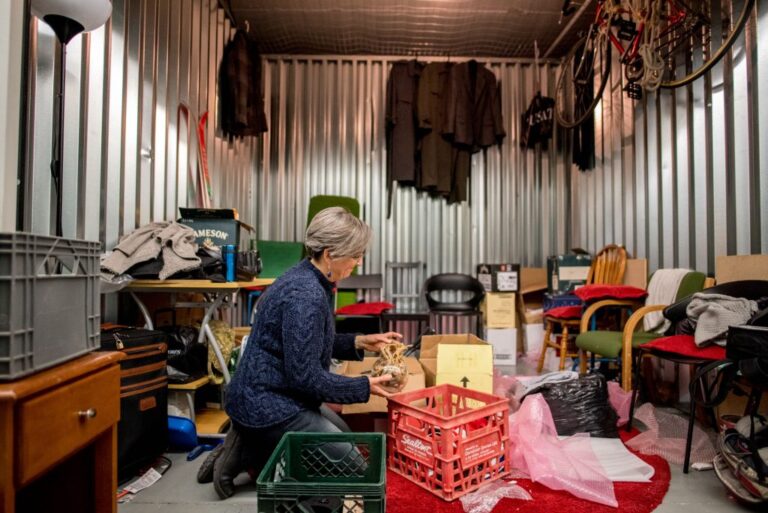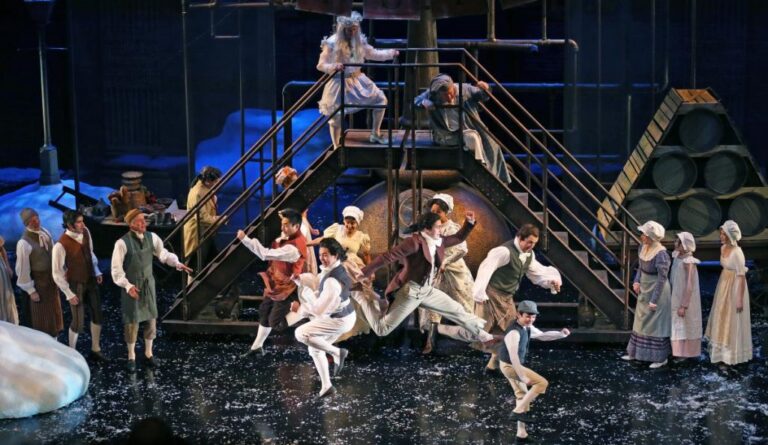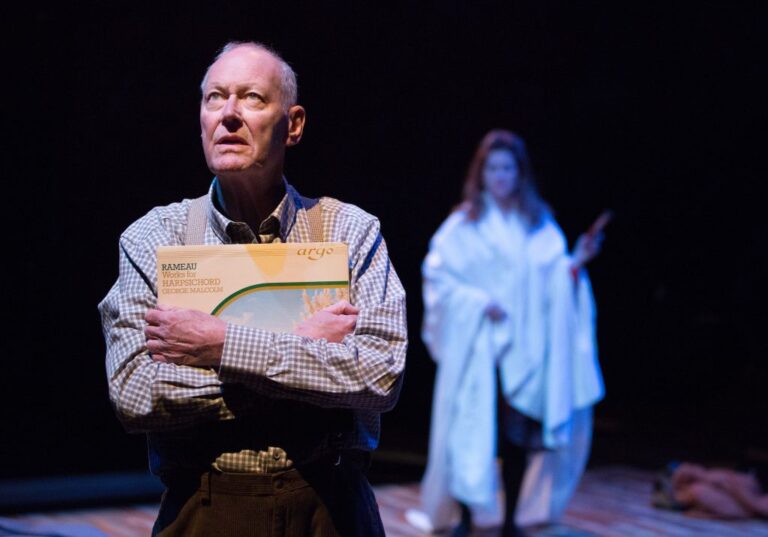Review: Peter Pan
Peter Pan
Bad Hats Theatre/Soulpepper
Written by J.M. Barrie. Adapted by Fiona Sauder and Reanne Spitzer. Directed by Severn Thompson. Production designed by Amy Marie Wallace. Lighting by Ken MacKenzie. Music by Landon Doak and company. At Soulepper’s Young Centre for the Performing Arts. Runs until December 31.
Joy to the world—the most inventive, lively, whimsical production of Peter Pan has arrived for the holidays!
The production from Bad Hats Theatre had a sold-out run last year, playing in a string of microbreweries (I kid you not), and this year Albert Schultz, the wily, smart artistic director of Soulpepper picked up the production for inclusion in its holiday programming.
J.M. Barrie’s classic story of a boy who never wanted to grow up is skillfully adapted by Fiona Sauder and Reanne Spitzer. This version is pared down—for example Nana the dog is not included, nor Tiger Lily—but none of the fun, humour, or even the scary bits have been left behind.
And while we all know the story, Sauder and Spitzer have shaken it up just a bit. For example, when Tinkerbell selflessly drinks the poison meant for Peter and is dying, Peter does not do the usual thing of asking the audience to applaud if they believe in fairies. No, Sauder and Spitzer handle it in a different why that accomplishes the same thing. Lovely bit of invention there.
The cast of eleven handle all the parts from Mr. and Mrs. Darling and the three Darling children to the lost boys and Captain Hook’s pirate henchmen, often playing two parts with just a switch of clothing or an accessory, like the red headband in the case of the pirates.
The wondrous Sauder plays Peter Pan with a hands-on-hips confidence. This is a Peter Pan who is determined not to grow up. He is not stubborn in this regard, it’s much deeper than that. The resolve to remain a boy forever is fierce. And yet Sauder has a whimsy and a sweet innocence that is endearingly like a boy in a children’s story.
This joyous production does not rely on technology, wires, pullies, or other paraphernalia to suggest flying or sailing on the ocean or even the crocodile that ate Captain Hook’s hand as an appetizer and is looking for the rest of him as a main course. It depends on something much more powerful than techno-glitz: the audience’s imagination. For instance, as we hear the ticking of the crocodile as it approaches, a large trunk is moved closer to the action and we take on faith that it is the crocodile, and certainly so when the lid is opened, like its jaws, and then snapped shut.
Severn Thompson is the gifted, creative director who trusts the audience to use their imagination and run with it. Peter held aloft by others, with his arms out, becomes a boy who flies. A ball thrown from one character to another becomes Tinkerbell, flitting around the stage. When she is stationary, Spitzer plays her with a chirping soft voice, distorted language, and light finger-bells. Graham Conway is a swaggering Captain Hook, yet needs a helping hand whenever he has to descend from a height, like a chair or table. It’s rather sweet.
The cast play many and various instruments and sing the music of Landon Doak that is rousing, joyful, and thoughtful. The last song tells us how important it is to embrace wonder in our lives—that is how we will stay young while growing up. This production of Peter Pan is full of the wonder of imagination, creativity, and playfulness. It is a joy from beginning to end.
For tickets or more information, click here.
To read Fiona Sauder talk about the beauty of magic and imagination, click here.














Comments